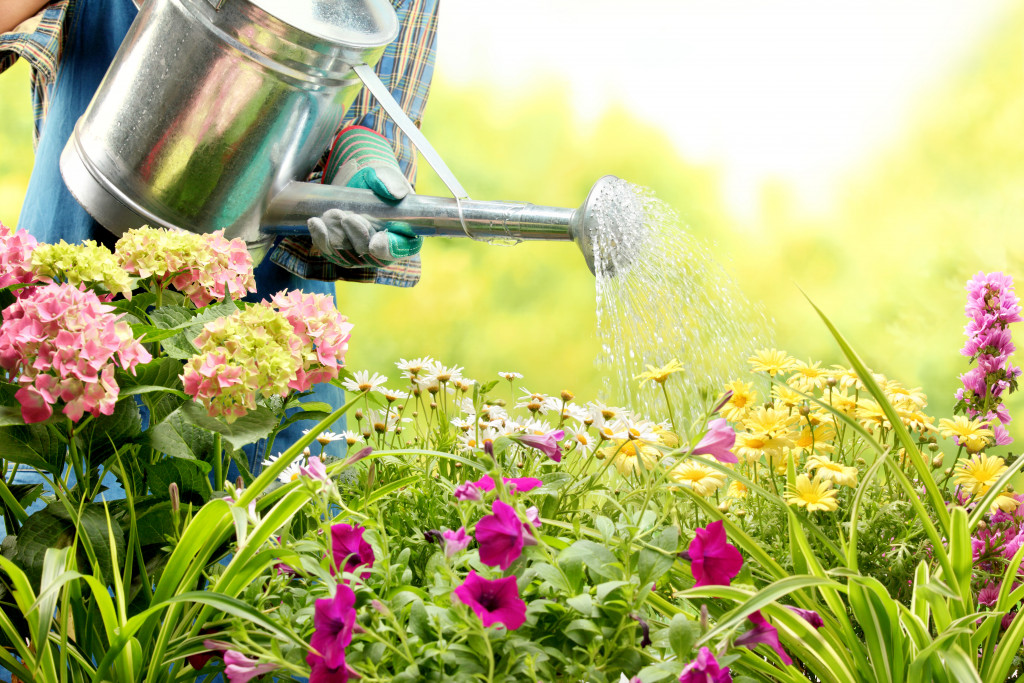- Choose drought-tolerant plants to reduce water usage in your home landscape.
- Use mulch to retain moisture and suppress weeds.
- Water efficiently by avoiding overwatering or watering during the hottest part of the day.
- Harvest rainwater with rain barrels or cisterns for later use.
- Fix any issues with your lawn irrigation system to prevent water waste.
Water conservation is becoming increasingly important as Earth faces the threat of water scarcity. One of the areas where you can make a significant impact is by conserving water in your home landscape. Following some simple tips, you can reduce your water usage and save money on your water bill. Here are five tips to help you conserve water for your home landscape.
1. Choose Drought-Tolerant Plants
One of the best ways to conserve water in your home landscape is to choose plants that are native or adapted to your region. These plants are often more drought-tolerant and require less water than non-native species. By selecting plants well-suited to your climate, you can reduce the water you need to maintain your landscape. Additionally, native plants are often easier to care for and can attract native wildlife, such as pollinators and birds.
When choosing plants, consider their water needs and the conditions in which they thrive. You can consult a local gardening expert or research online to find the best plants for your region. Some popular drought-tolerant plants include lavender, succulents, and ornamental grasses.
2. Use Mulch to Retain Moisture

Mulching is an excellent way to conserve water in your landscape. Mulch retains valuable soil moisture, meaning you don’t have to water as often. This can help conserve resources and save time. Additionally, mulch helps to suppress weeds, which can compete with your plants for water and nutrients.
To use mulch effectively, apply a layer of organic material, such as bark or wood chips, around the base of your plants. The mulch should be about two to three inches deep, and it should not touch the stems or trunks of your plants. You can also use compost as a mulch to provide additional nutrients to your soil.
3. Water Efficiently
Watering your landscape efficiently is critical to conserving water. One of the best ways to do this is to water your plants deeply but infrequently. This allows the water to penetrate deep into the soil, where the roots of your plants can access it. Watering deeply promotes healthy root growth and can help your plants withstand drought.
When watering your landscape, avoid overwatering or watering during the hottest part of the day, as this can lead to evaporation and water waste. You can also use a drip irrigation system to water your plants more efficiently. Drip irrigation systems deliver water directly to your plant’s roots, reducing water loss due to evaporation.
Here are other tips for water efficiently:
Check Your Sprinklers
Checking your sprinkler system regularly can help you ensure it is running properly and not wasting water. Look for broken heads, misaligned nozzles, or clogged lines that could be causing a water leak. Make sure you are only watering the plants that need it, and turn off any sprinklers that may be leaking.
Water Early or Late in the Day
Watering during the cooler morning or evening hours can help reduce water loss due to evaporation. If you need water during the day, try it in the late afternoon when the sun is not as intense. This will still allow your plants to absorb enough water without as much risk of evaporation.
Harvest Rainwater
Rainwater harvesting is an excellent way to conserve water in your home landscape. You can capture and store the rain on your property for later use with rain barrels or cisterns. This can help reduce the amount of water you need to purchase from your local water provider.
Install a Rain Barrel
Installing a rain barrel can help you save on water costs by collecting and reusing runoff from your roof. It also helps reduce the number of pollutants entering stormwater systems. Connect multiple barrels together to increase the water collected and place them near downspouts for maximum effect.
4. Harvest Rainwater
Harvesting rainwater is an excellent way to conserve water and reduce water bills. Rainwater harvesting involves collecting and storing rainwater for later use in your landscape. You can use rain barrels or cisterns to collect rainwater from your roof, which can then be used to water your plants.
To harvest rainwater effectively, ensure your rain barrels or cisterns are properly installed and maintained. You should also use a screen to filter debris and prevent mosquitoes from breeding in the water. Finally, use the collected rainwater within a reasonable timeframe to prevent it from becoming stagnant.
5. Fix Your Lawn Irrigation System
A malfunctioning lawn irrigation system can waste a significant amount of water. If your system is leaking or not working correctly, it’s important to address the issue promptly. By repairing your lawn irrigation system, you can ensure your plants get the water they need without wasting water.
If you’re unsure how to repair your irrigation system, it’s best to leave it to professional lawn irrigation repair. A professional can assess your system and recommend the best course of action. Regular maintenance and repairs of your irrigation system can also help to prevent future water waste and save you money on your water bill.
In Summary
Conserving water in your home landscape is important to protecting the planet’s precious resources. These five tips can reduce water usage and help make a difference. From selecting drought-tolerant plants to harvesting rainwater, there are many ways to conserve water in your home landscape. You can save money and help preserve Earth’s water resources with simple changes.

